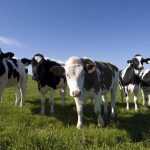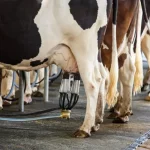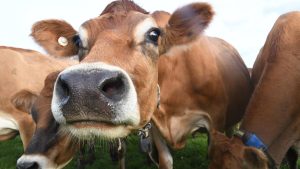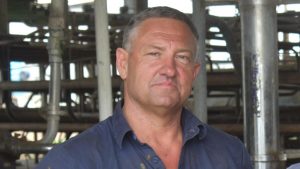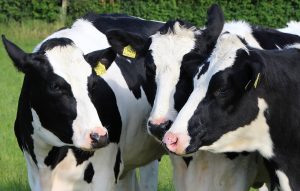
Limited milk supply growth and lacklustre demand led to soft global dairy commodity pricing in 2023. However, the global dairy market appears to be transitioning to the next phase in its cycle, with prices expected to move higher through 2024, according to a new report from Rabobank.
“Still, the market remains finely balanced, and uncertainty remains surrounding underlying demand for 2024,” the specialist agribusiness bank says in its just-released Global Dairy Quarterly Q4 2023 report.
As 2023 draws to a close, Rabobank says, the global dairy market continues to walk a tightrope of limited “new” milk and sluggish demand.
“The year saw soft global dairy commodity pricing due to weaker underlying fundamentals. Global milk supply growth was underwhelming, with three consecutive quarters of growth. Then lower milk prices, elevated costs, and weather disruption put the brakes back on,” the quarterly report said.
Rabobank’s global milk supply outlook for 2024 has weakened, with sluggish growth expected across most export regions. “The milk supply export engine never fully fired on all cylinders in 2023 and declined year-on-year in the third quarter by 0.2 per cent,” says report lead author, Rabobank senior dairy analyst Michael Harvey.
“Year-over-year milk production from the ‘Big 7’ (the EU, US, New Zealand, Australia, Brazil, Argentina and Uruguay) exporting regions is forecast to decrease through Q1 2024 before turning positive. Overall, milk supply is forecast to grow by a modest 0.3 per cent for the entire year,” he said.
A slow recovery in prices Rabobank said in local currencies, farmgate milk prices across the export regions will close out 2023 anywhere between 20 per cent to 40 per cent lower versus the start of the year.
However, with the 2024 feed cost outlook looking more favourable, some regional milk prices have recently increased, boosting farmgate margins, the bank said.
“We expect a slow recovery in dairy commodity prices back to long-term averages,” Harvey said.
“However, current fundamentals provide the perfect ingredients for price volatility and a possible market whiplash. Geopolitical instability risks, volatile energy markets, and weak macroeconomic conditions will be something to watch in 2024 for the global dairy markets.”
Demand uncertainty ahead
Harvey said demand would be a key factor to watch in 2024, with high dairy inflation, broader cost-of-living issues, and weak consumer confidence remaining on the horizon.
“Peak food and dairy inflation have passed, but market uncertainty remains, and rising unemployment will further impact purchasing power in 2024. Emerging markets and lowincome households are under the most pressure,” he said.
“In China,” Mr Harvey said, “consumer prices are falling, and foodservice recovery continues, but overall consumption growth is sluggish. “China’s import appetite for dairy commodities is still expected to drive any Oceania commodity price rally in 2024.”
Rabobank expects China’s import volume to flatline in 2024, which would be a positive result, given the previous two years of withdrawal from the global markets.
This is an opportunity for importers outside of China to build stocks in 2024, the bank said.
“Other factors to watch in 2024 include a mildly softer grain and oilseed price outlook, El Niño and weather-related risks, mixed livestock markets in export regions, and the impact of the Israel-Hamas war on global markets,” Harvey said.
Australia
Mr Harvey said Australia’s milk supply had “modestly recovered” in the first quarter of the new season.
“Milk production reached 2.036 billion litres in the July to September period, 0.5 per cent year-on-year higher. Growth has been elusive in Western Victoria and Northern Victoria,” he said.
Harvey said El Niño’s impact was becoming evident in dry conditions. “For most of Australia’s key dairying regions, rainfall between August and October was below average, negatively impacting soil moisture. And the latest climate outlook leans toward below-average rainfall into Q1 2024,” he said.
However, the report notes, dairy farmers are overall “well-equipped to combat these seasonal conditions.”
“Most dairy farmers have access to good carryover feed reserves, ample supply of supplementary feed, and irrigation water. Nonetheless, after three consecutive record winter crops, the current winter crop will decline materially” Mr Harvey said.
The bank says cost inflation on farm has peaked, with milk production costs moving to the next phase of the cycle.
“Feed and fertiliser input costs are expected to track closer to long-term averages, which is good news for producers. However, interest rates are still increasing, and inflation is evident across most overhead costs,” it said.
Harvey said Australian farmgate milk prices were set for the remainder of the season (ending June 30, 2024), remaining at or near record levels, buffering the sector from global markets.
“Australian dairy exports continue to plummet,” he said. “In the first three months of the new season, export volumes are down more than 13 per cent year-on-year with big falls in milk powder ingredients, bulk cheese, and butter. Export volumes of liquid milk, a growth sector in recent years, are off 30 per cent year-on-year,” he said.
“A tight domestic milk supply is part of the story. However, export price competitiveness remains an issue given the high price of farmgate milk versus major competitors. Australia’s butter and cheese imports are up 43 per cent and 21 per cent year-on-year, respectively.”
Harvey said Australian households continue to adjust purchasing behaviours in response to an income squeeze.
“While dairy purchases are generally outperforming other discretionary food items, all signs point to some volume declines across the different channels. The dairy CPI (Consumer Price Index) for the September quarter shows it has peaked and is trending lower, but it is still elevated by historical comparison,” he said.
The quarterly report said, “in 2024, economic conditions are expected to remain sluggish, with unemployment levels widely predicted to rise.” Rabobank expects Australia’s exportable surplus to gradually stabilise over the course of 2023/24. “A further recovery in milk supply will be the catalyst. However, export competitiveness will remain an issue in the near term.”

